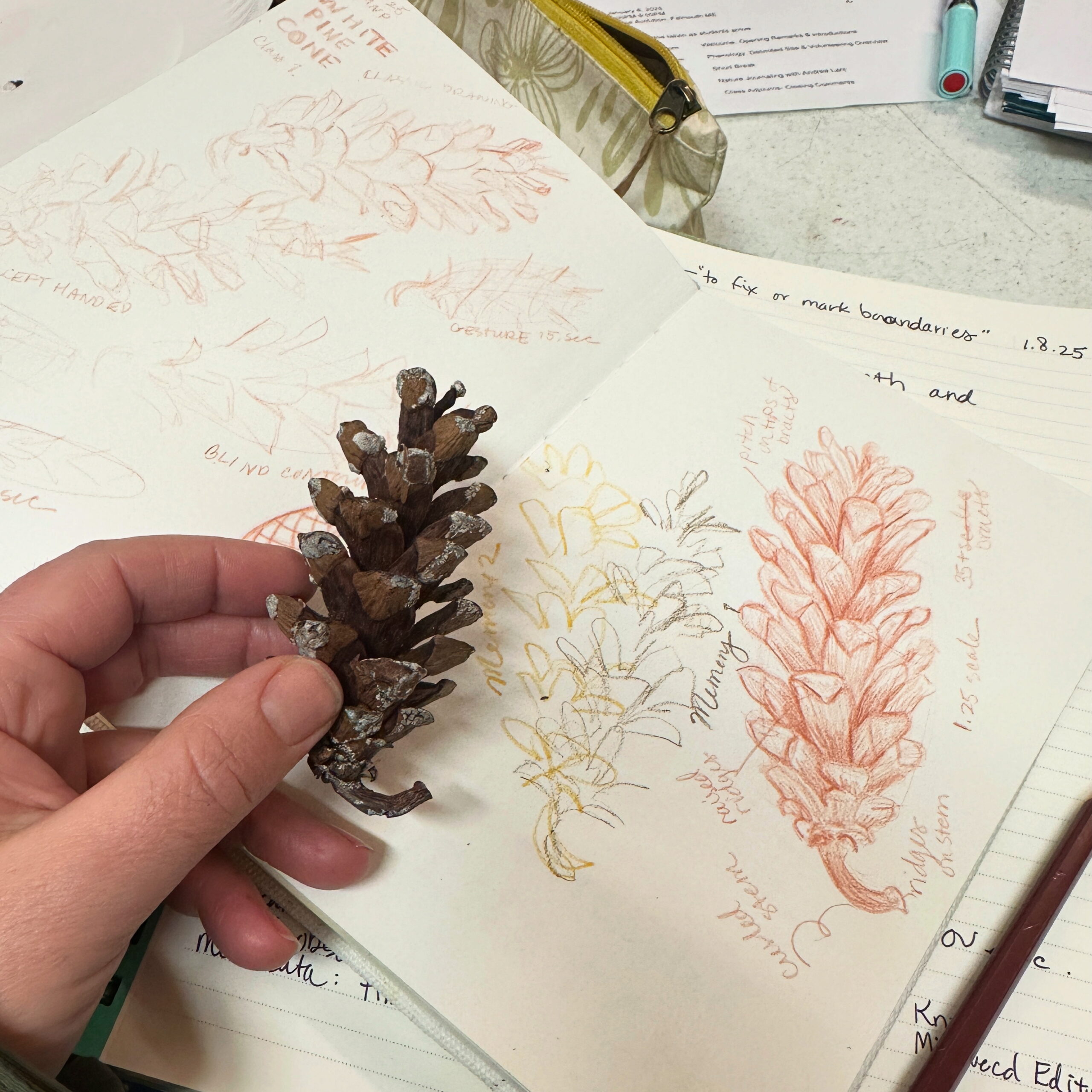February 6, 2025
Mammals, Nature Journaling, Phenology, Delimited Site, Tracking
The First Class: Nature Journaling and Phenology
On January 8th, 2025, I made my way to Maine Audubon at Gilsland Farm. I’ve been there many times, but this time it was for my first ever Maine Master Naturalist class. When I learned I was accepted in October, I knew this would be a good year. Nature has a way of bringing me through, no matter what, and this is the reason I want to become a Maine Master Naturalist— so I can share the gift of nature with others and help them connect with nature, too, especially through the practice of nature journaling. The MMNP meets twice a month, one Wednesday night and one Saturday night. We also have homework in between. I’ll be sharing about my journey this year and hope you follow along.
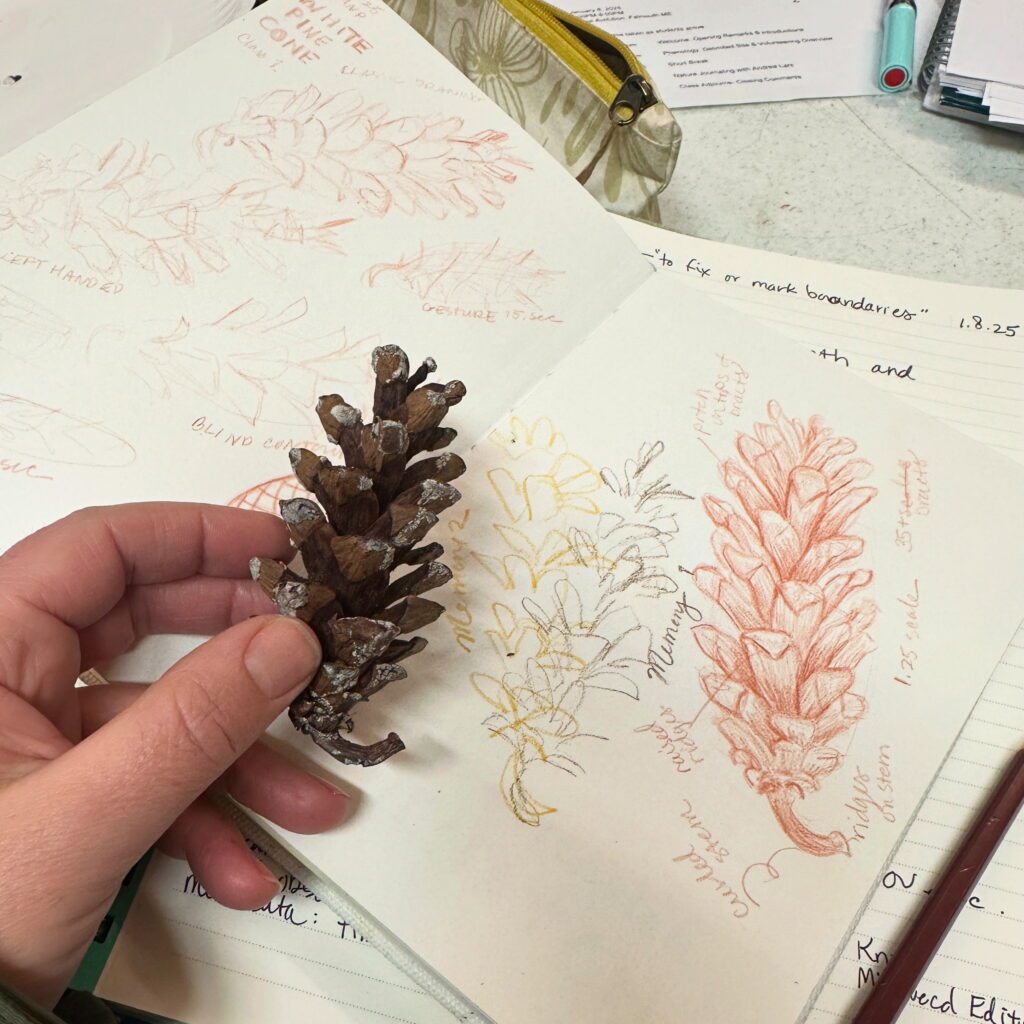
On that first night, the room was buzzing with the excitement of diving in. We shared who we are, connected over topics we are passionate about and spent the night learning about the year ahead. We also covered the topic of Nature Journaling. We got to know a pine cone well by drawing it several times. We practiced contour drawing, blind contour drawing, drawing from memory with our eyes closed, simplifying, and also drawing how we would with a given time frame from minutes down to only a few seconds. My double page spread was full of drawings of the same pinecone.
Delimited Site Choosing
We also had an amazing and full presentation on phenology and choosing a delimited site to visit for this year, to go home and think about. Choosing my site was difficult only in that I have several options close by. I wondered about my parent’s pond, or the hill I collect monarchs on, or a section in my backyard woods, or the river across the road, but ultimately I landed on my own backyard— the section of “lawn” that I’m not mowing. This year I will track species activity and sketch in my nature journal, at least one hour a month of time spent here observing and recording my findings. It’s a meadow I feel drawn to.
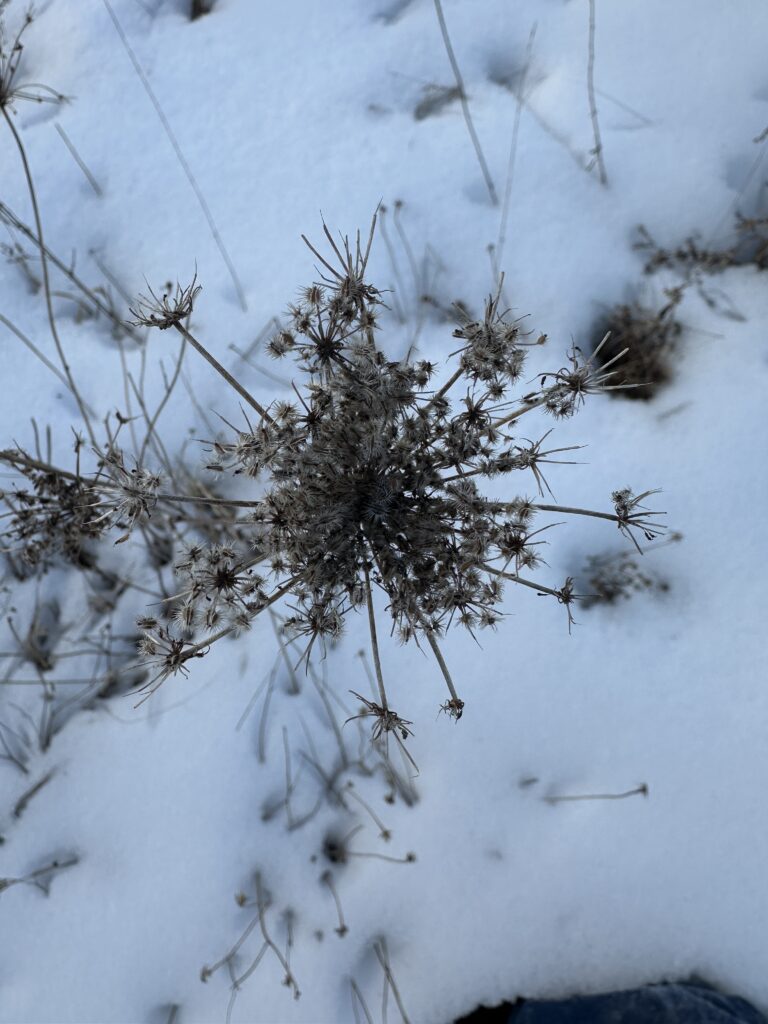
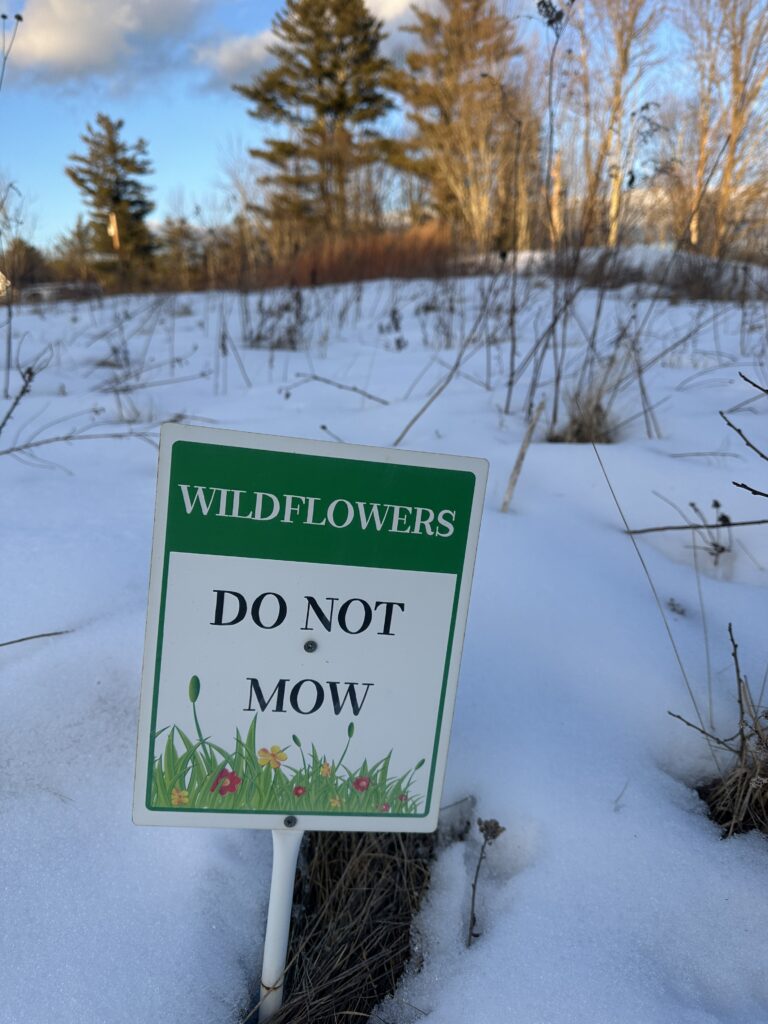
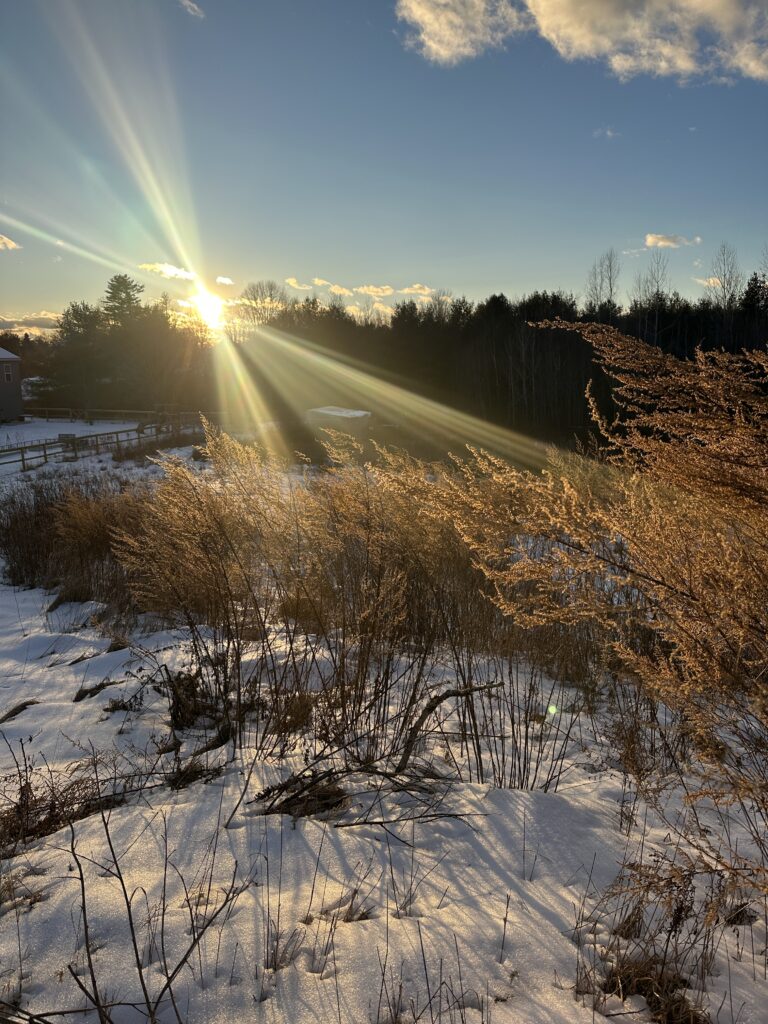
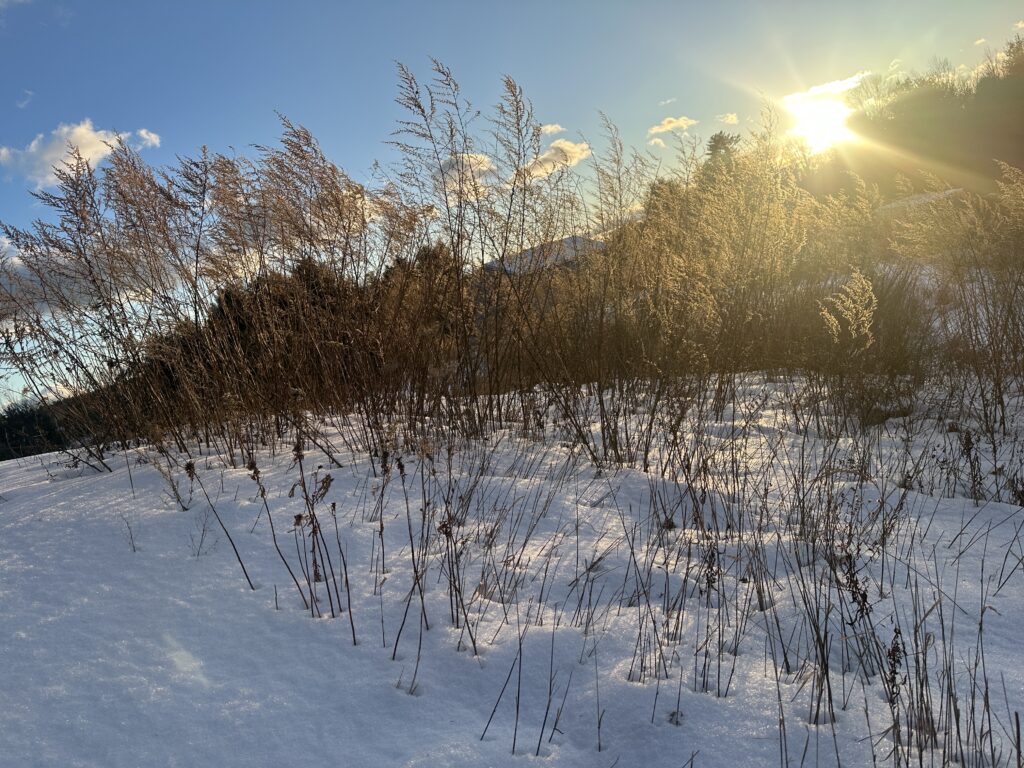
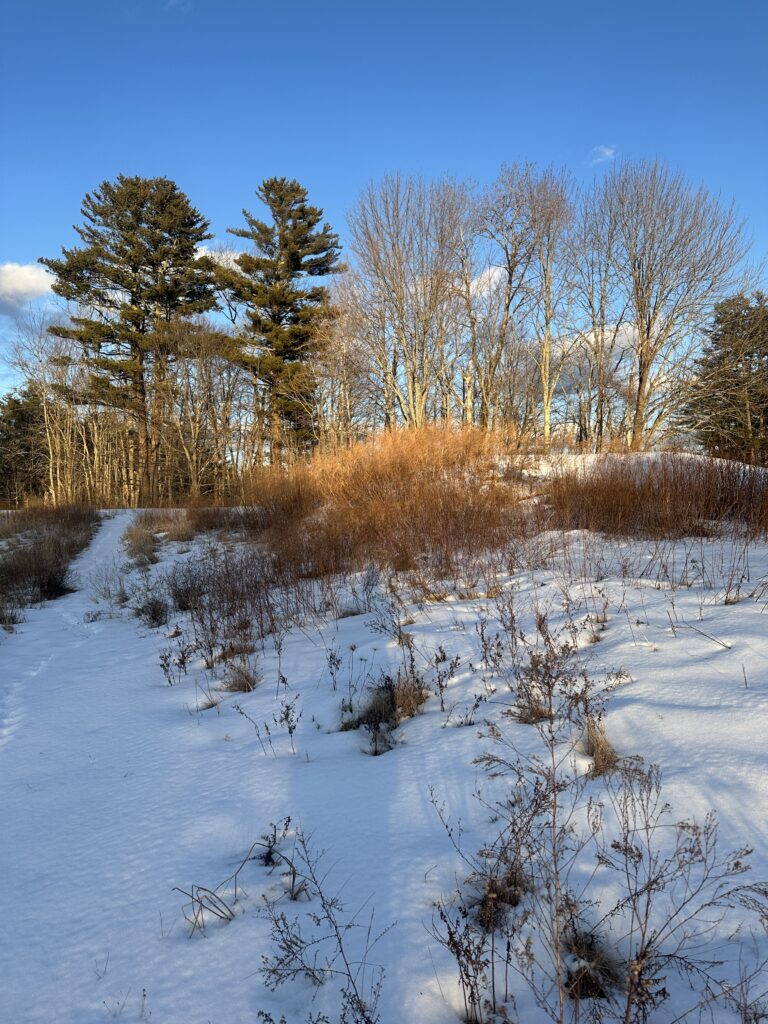
Mammals and Skull ID
Hands On Learning
On Saturday, we began the morning with a workshop on skull identification. Carnivores, herbivores, omnivores, carnassial teeth, auditory bullae, canines, incisors, crests on craniums, nose-to-orbit, so many aspects to take in and remember, but over time, with hands on learning, I know it will stick.

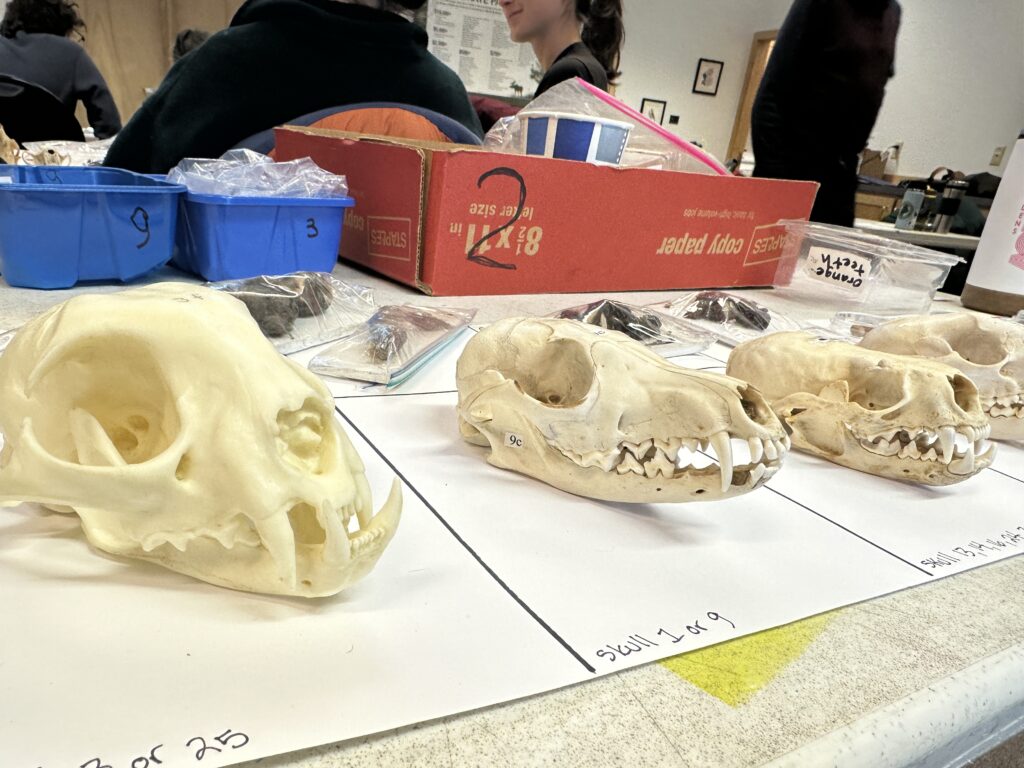
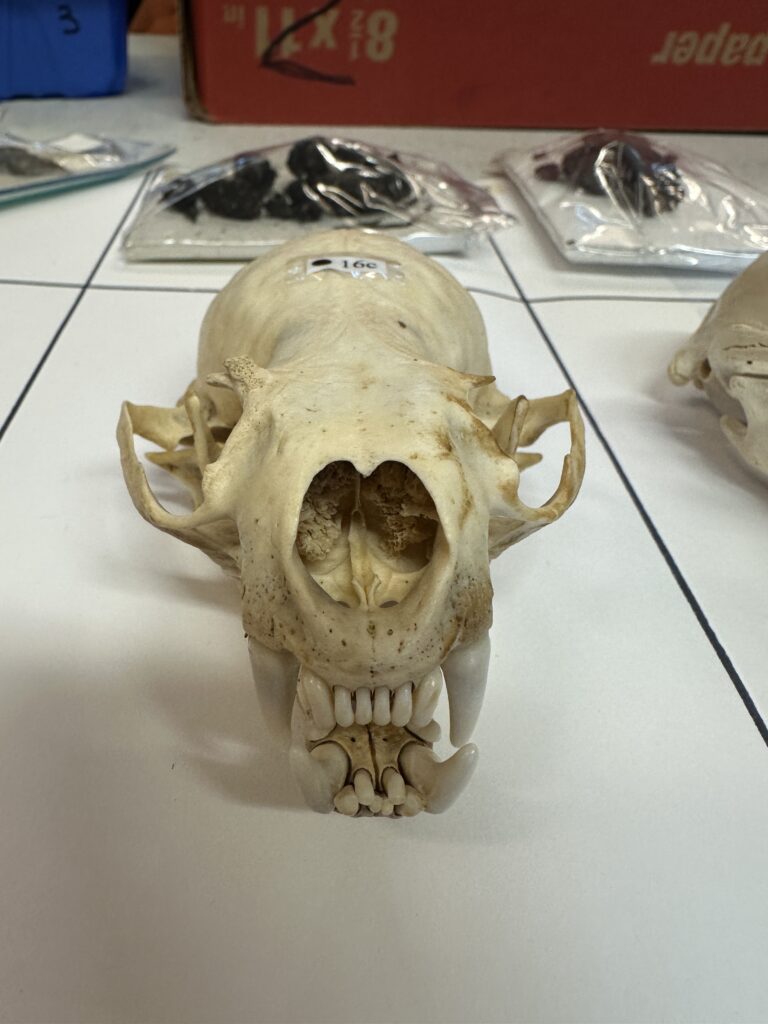
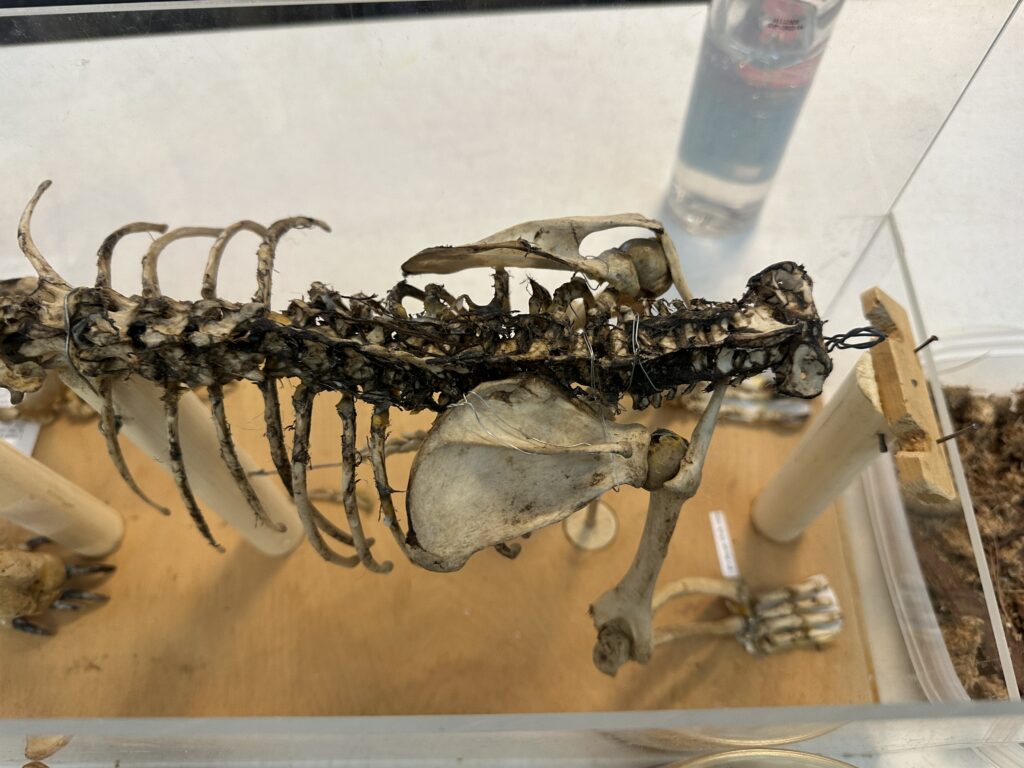
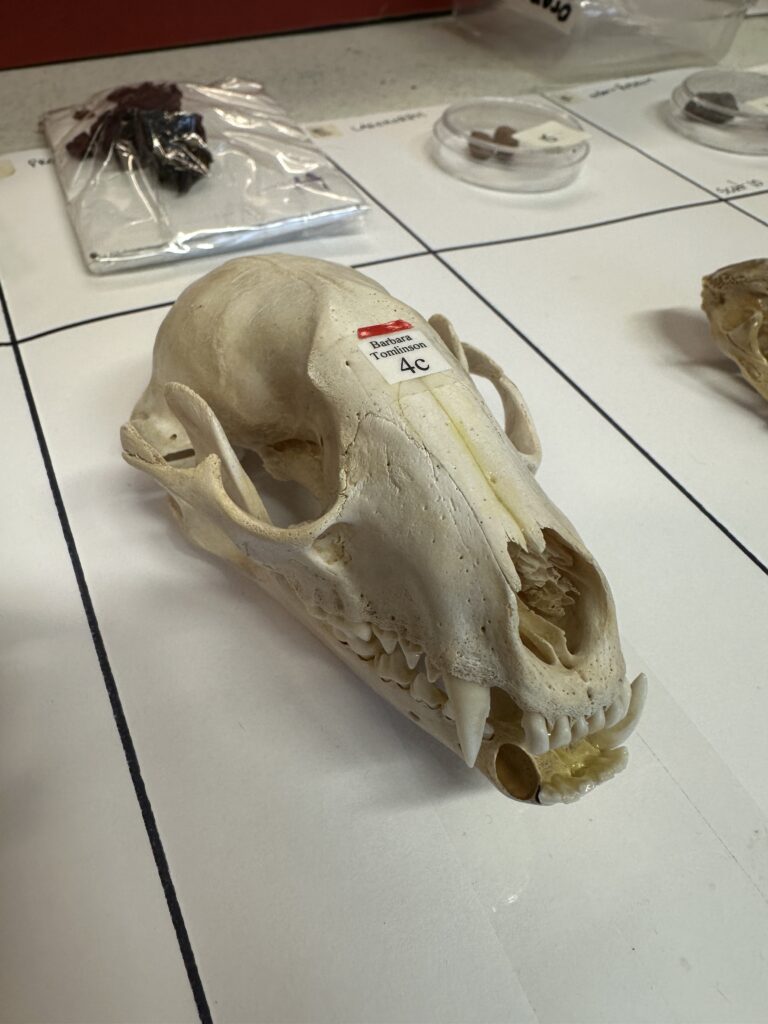
We also had a workshop on mammals and were able to see some frozen specimens up close and personal, (obtained legally with a permit from the Department of Inland Fisheries and Wildlife). Thinking about mammal ID from a baseline without assumptions was harder than I thought. I come to this course with some knowledge of the outdoors because of family, and a lifelong passion for nature. But when you’re learning about nature, it’s best to leave that pre-existing knowledge tucked away because you might be wrong. Your mind learns best with an open thought process and willingness to consider all of the options. It’s a challenge, and I welcome it.
Tracking
Field Work
In the afternoon, we ventured outside for some activities, and tracking, then sent home with full minds, and a list of tasks for the month.
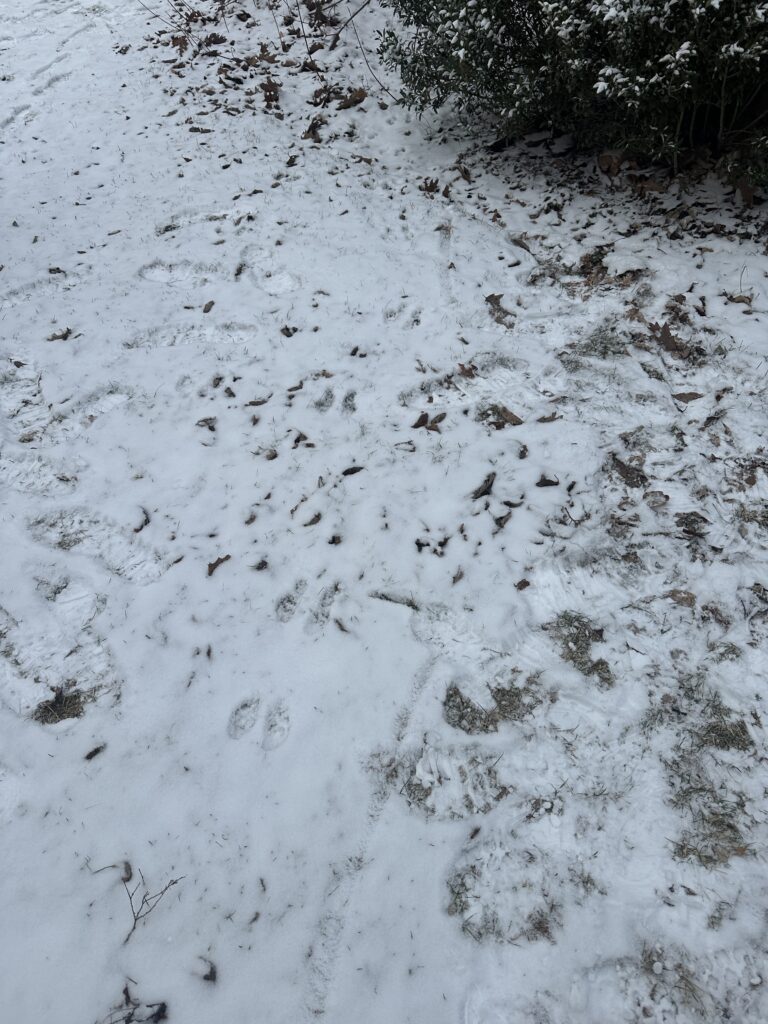
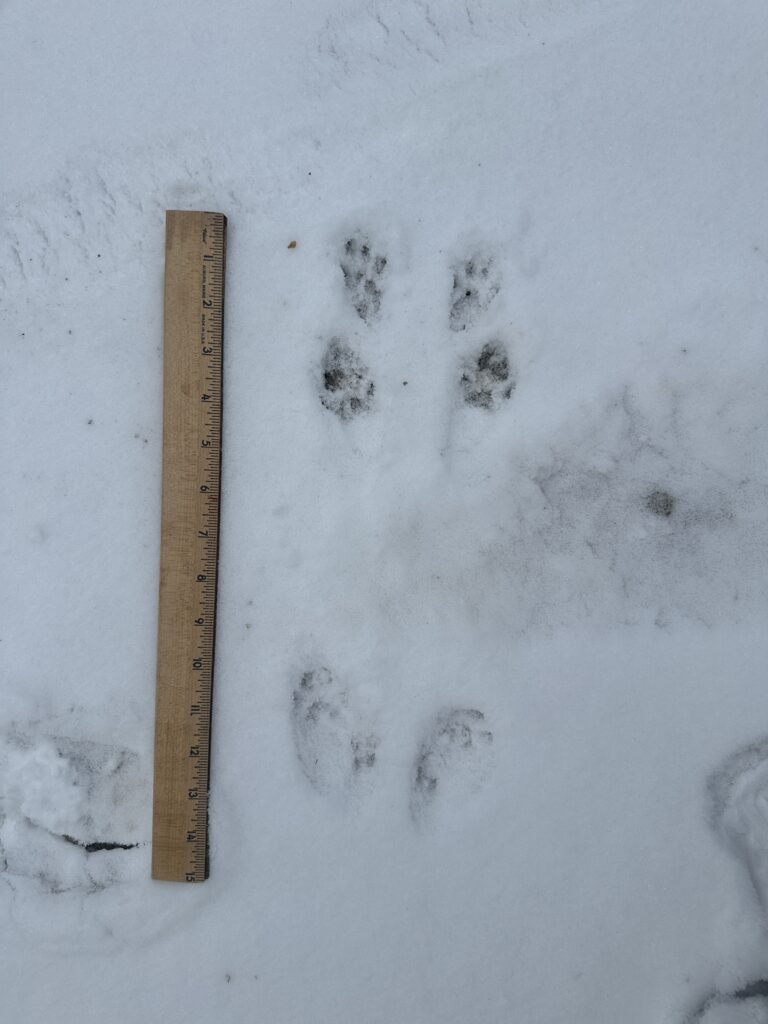
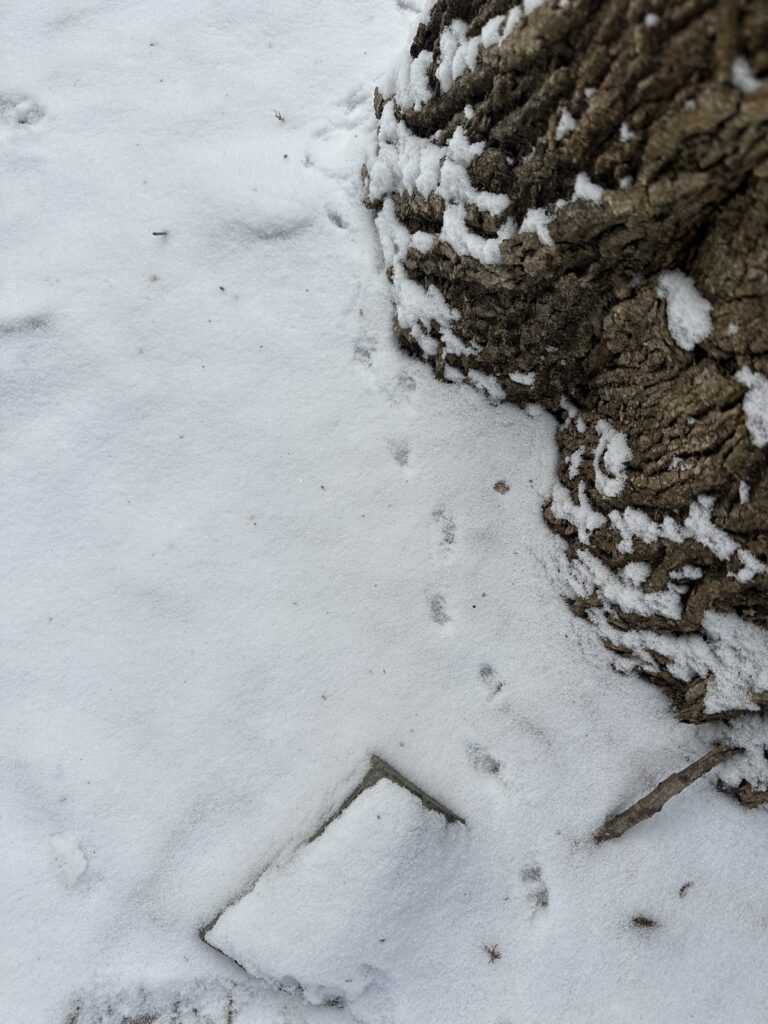
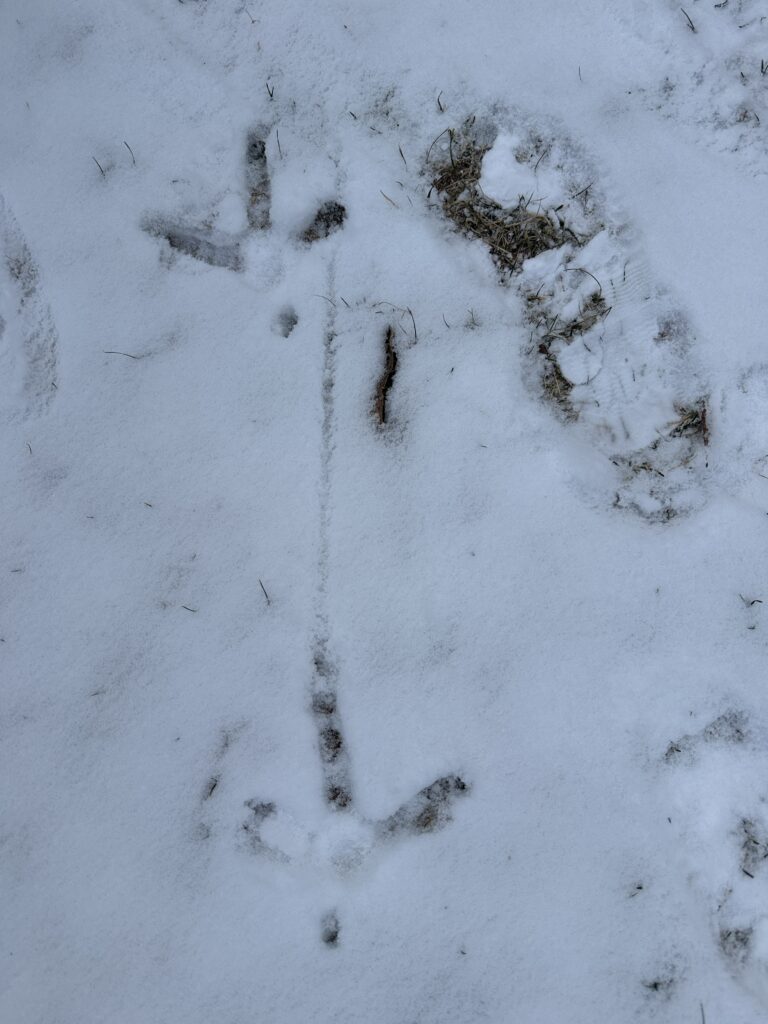
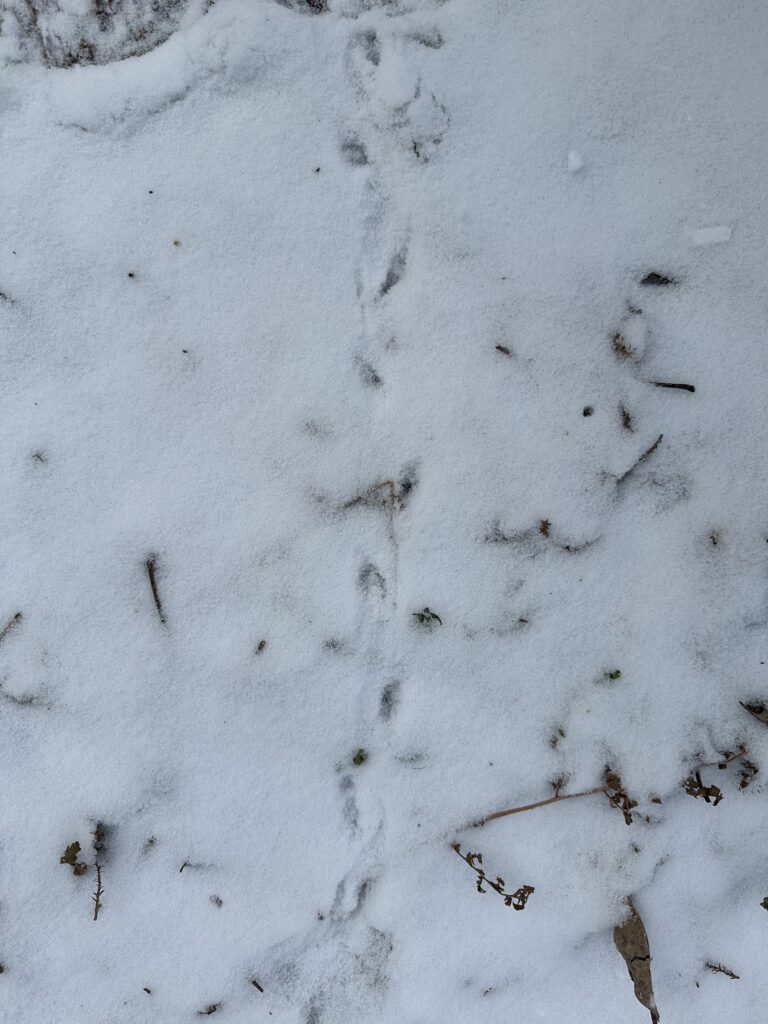
Homework
Tracking, Nature Journaling, Discovery Box, and Delimited Site
All month, I went out tracking— my backyard, by the river, and in fields. I found Wild Turkey, white-tailed deer, Dark-eyed Junco, feral cats, red fox, American Crow, field mouse, and more. I went out trying to find otter tracks by the river, but that’s where I saw the mouse tracks. I’ll take it. Cute tail drag.
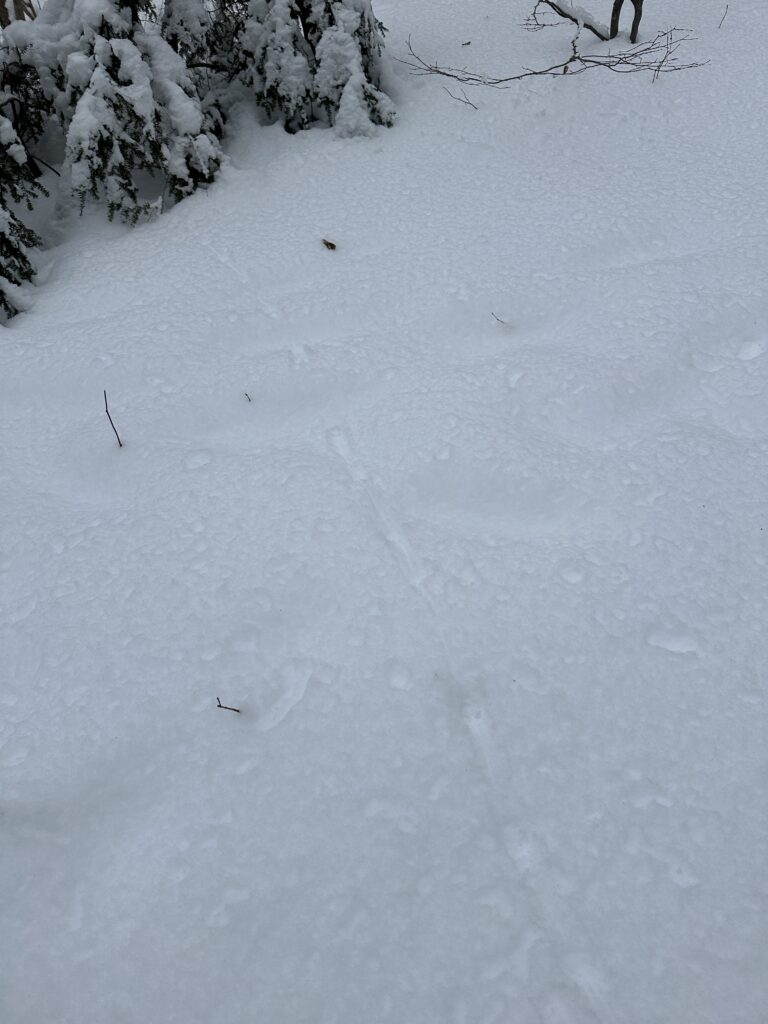
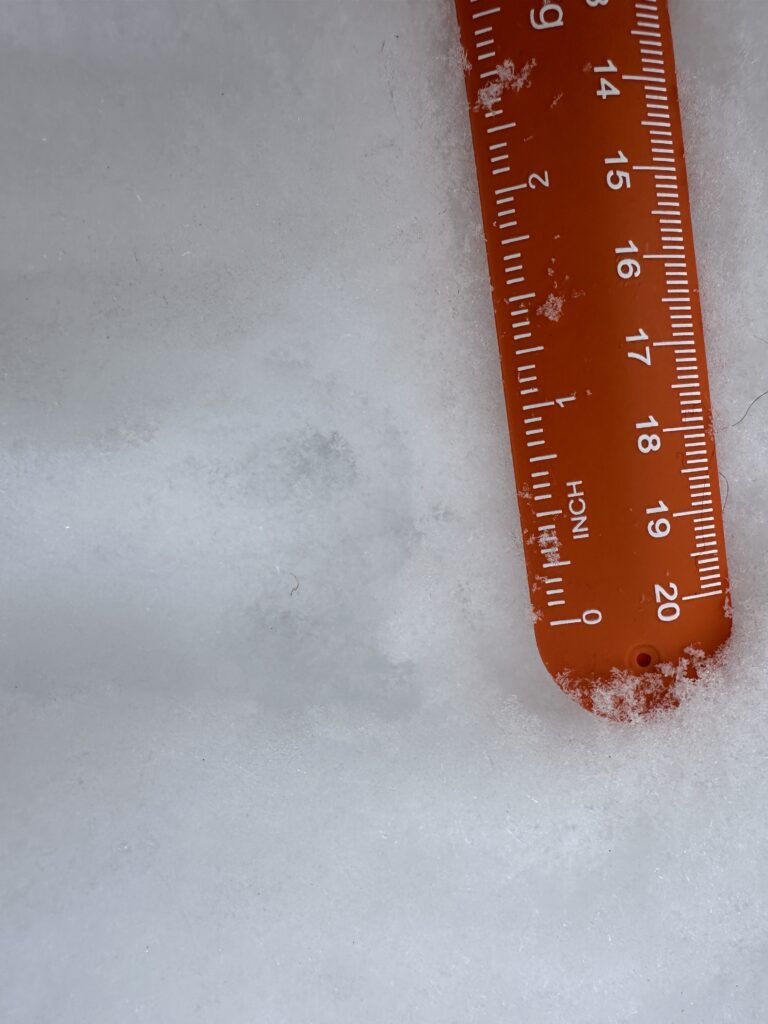
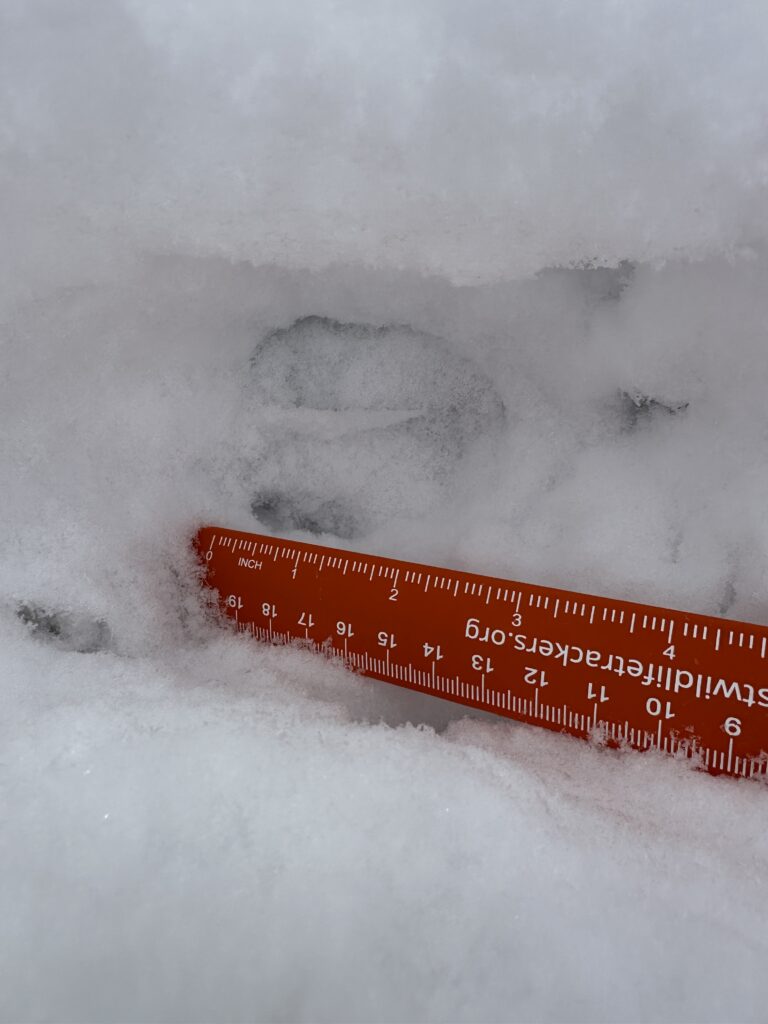
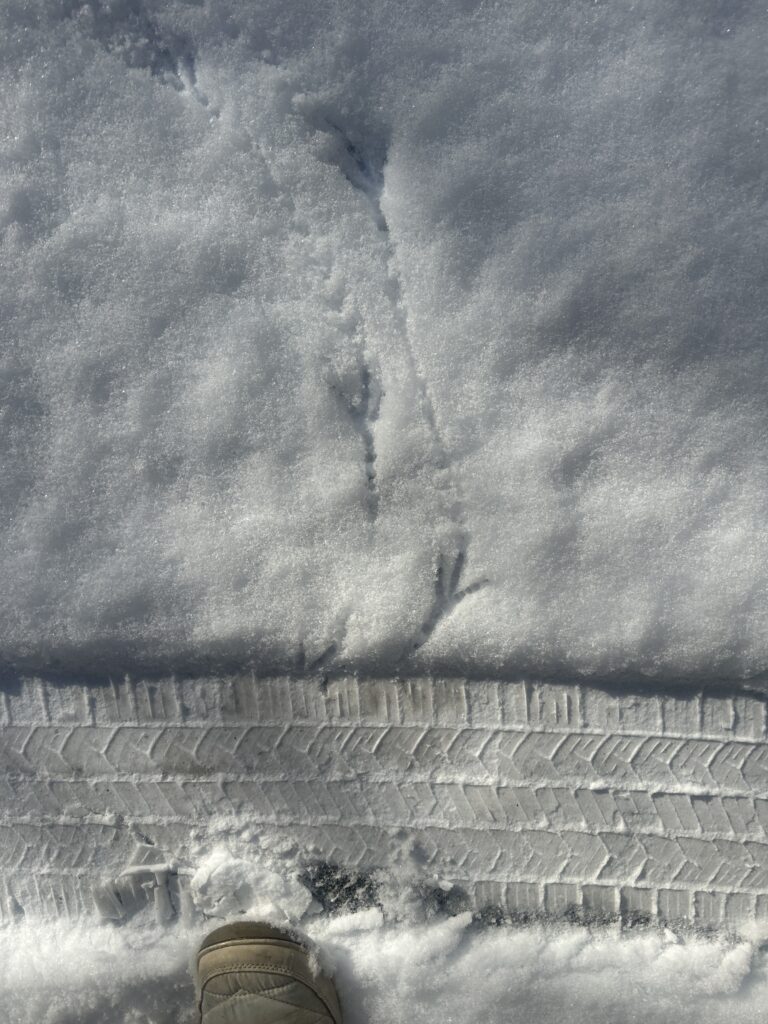
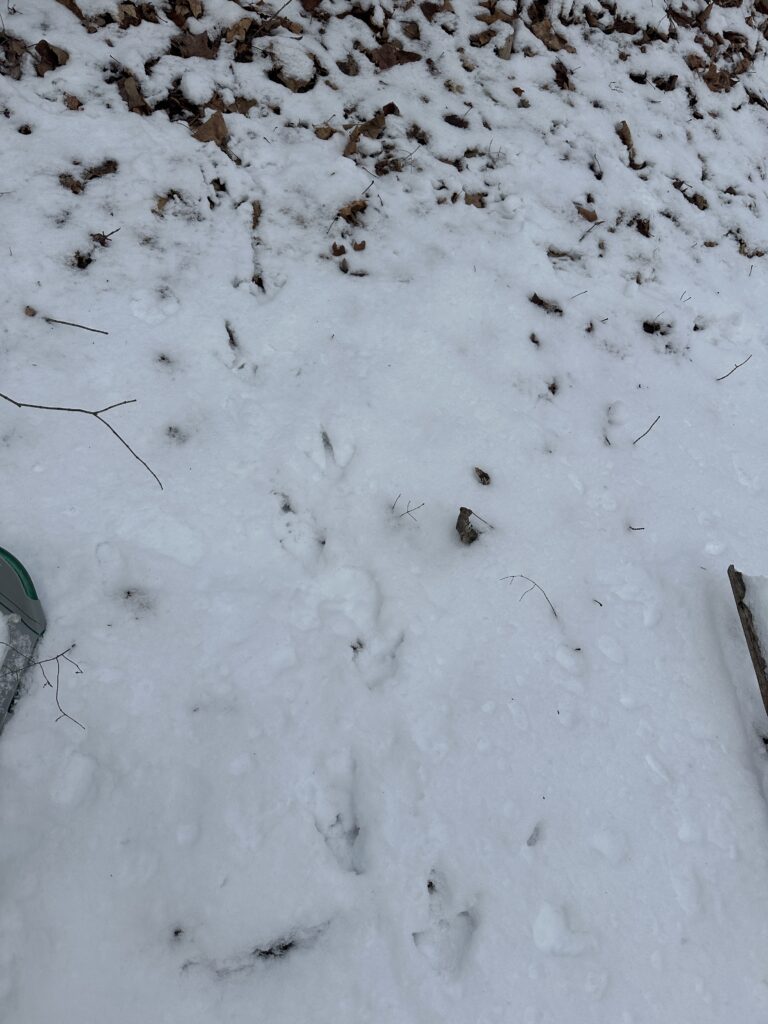
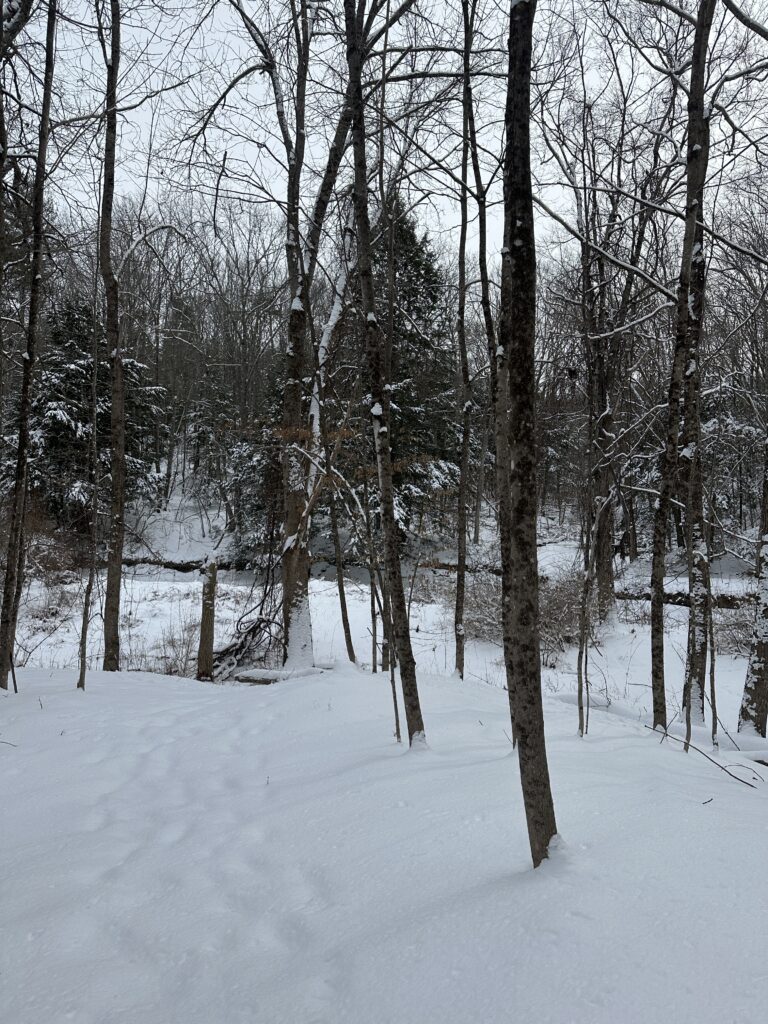
In the field, I discovered blood and a running track—deer, I think. The span of the stride was 16ft. Blood drops were in the left side of the track where two feet almost direct register. The track stretched across the field for almost a mile. I felt bad for the critter. Would another animal become aware of their plight?
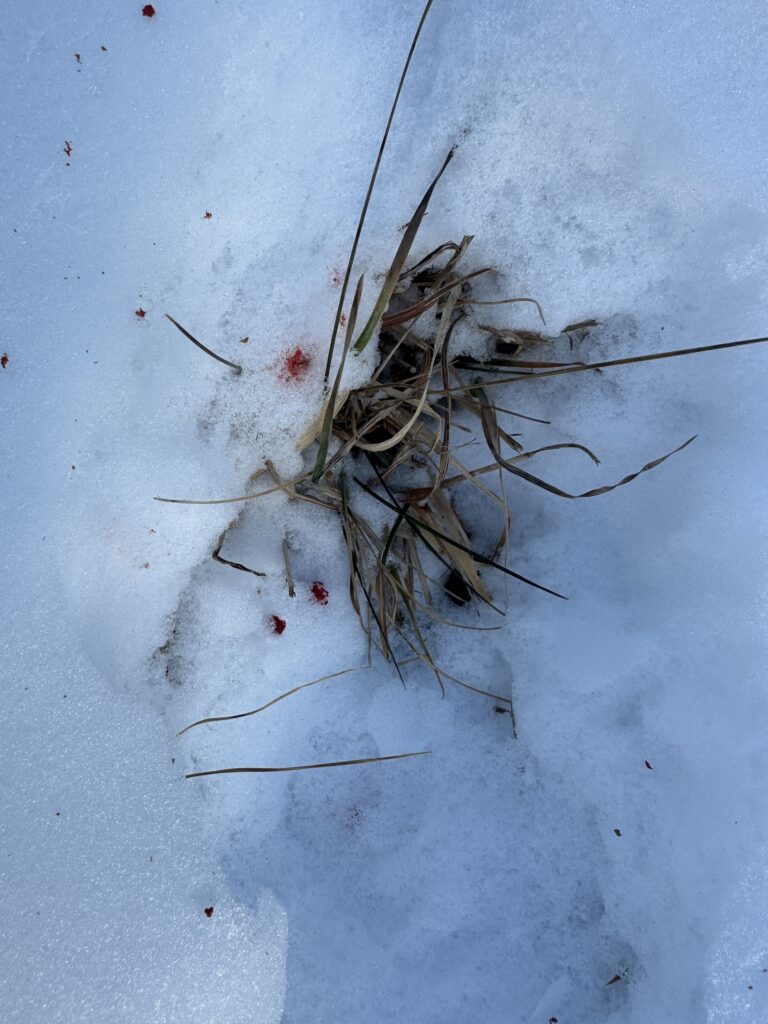
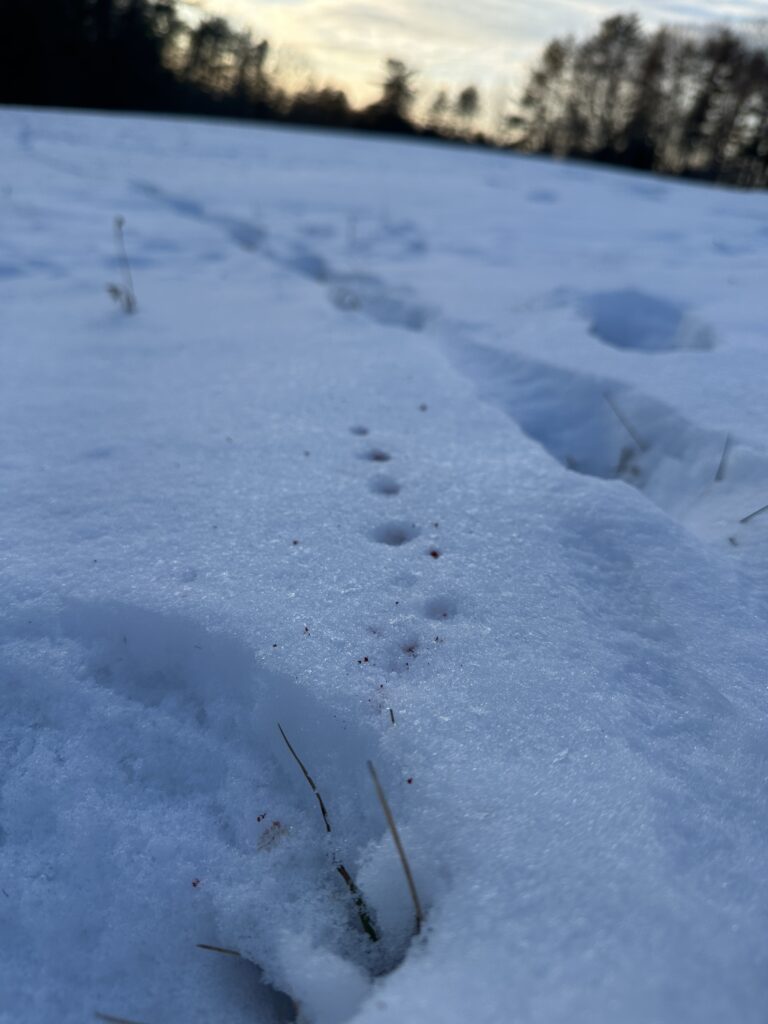
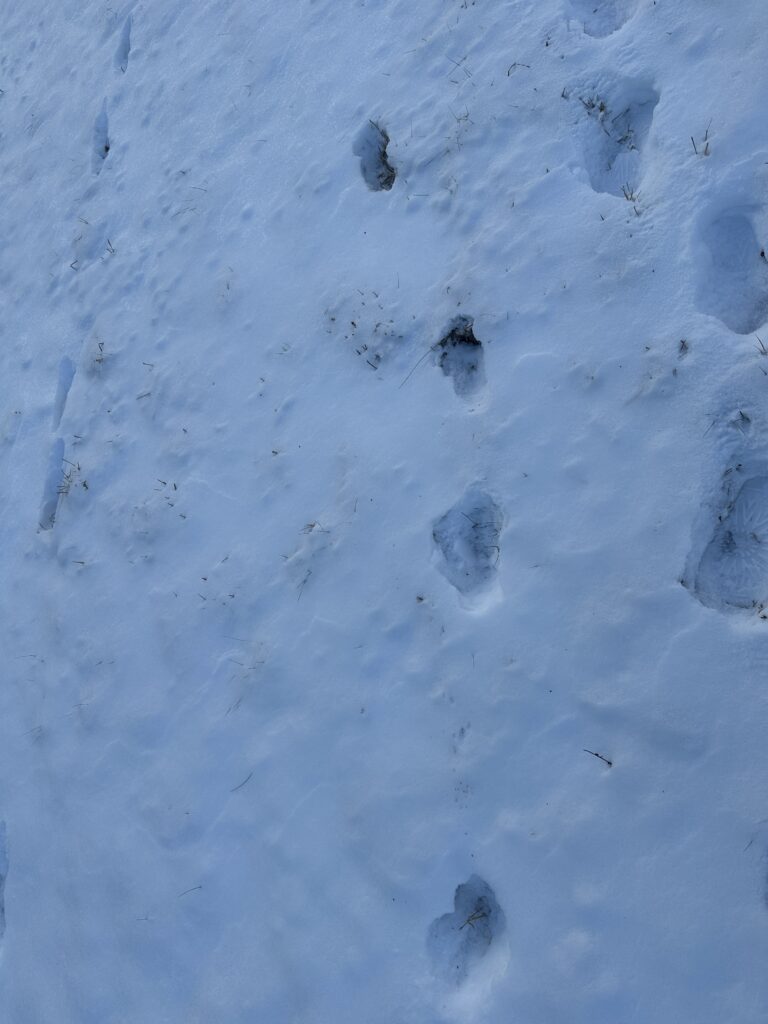
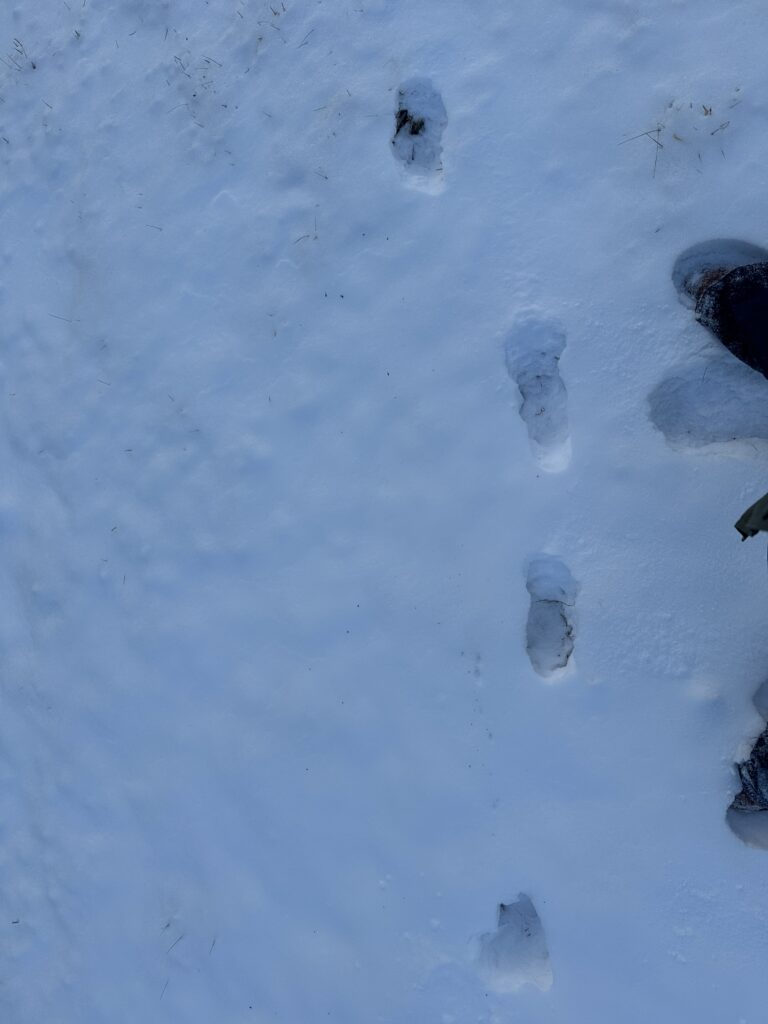
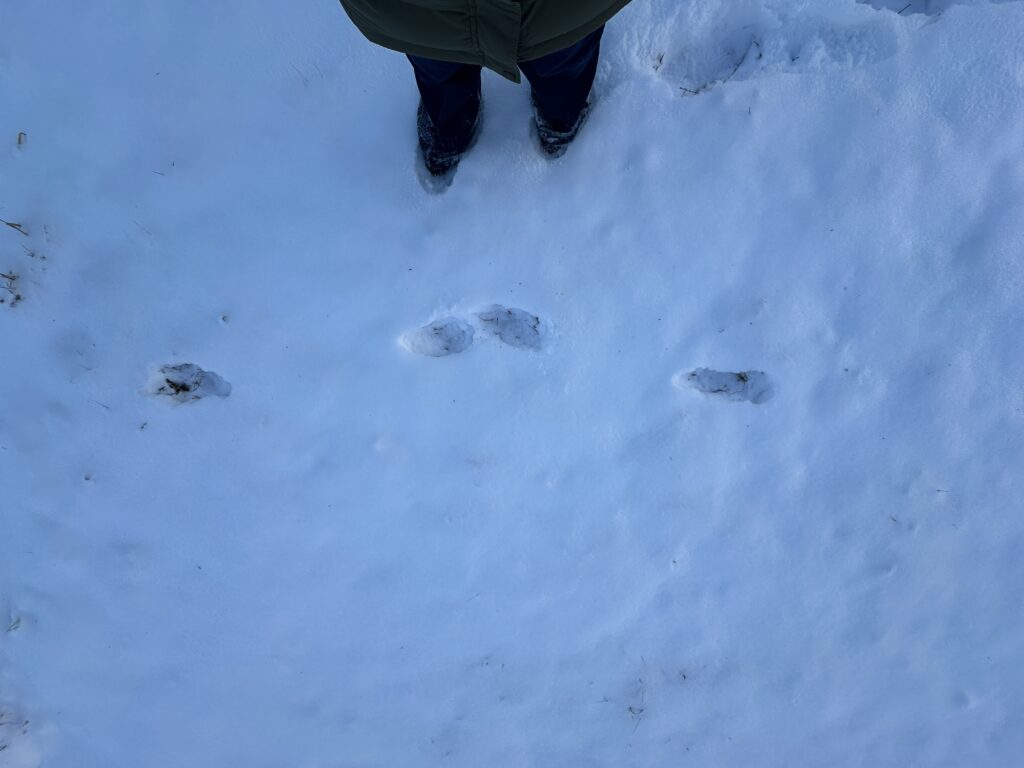
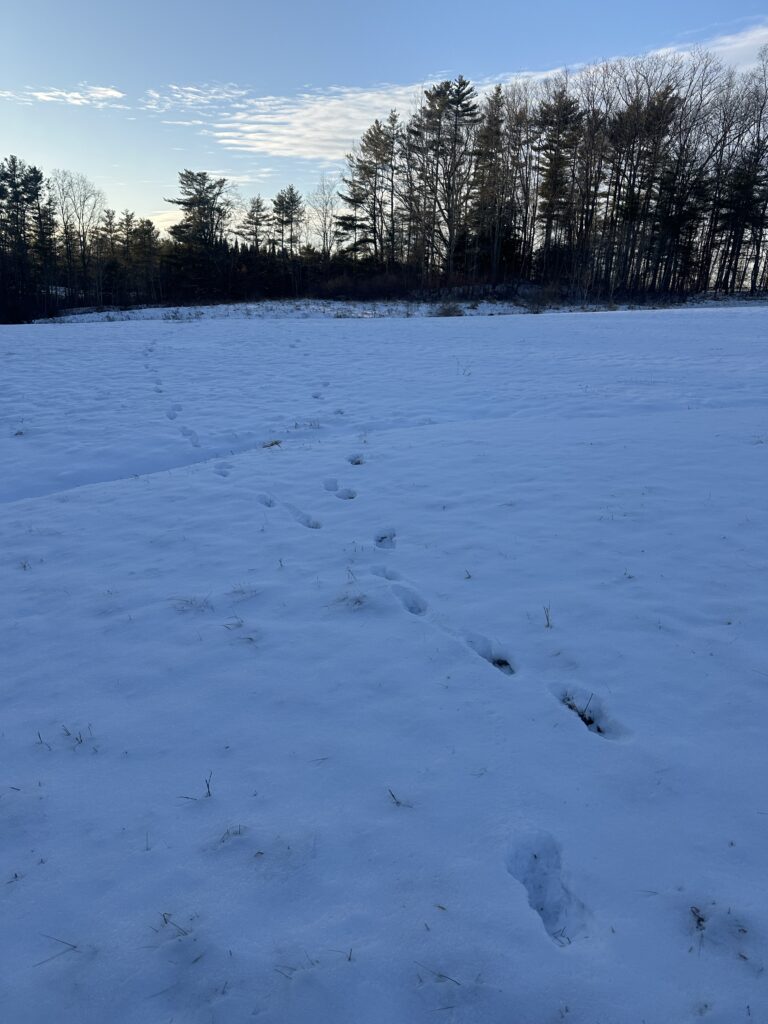
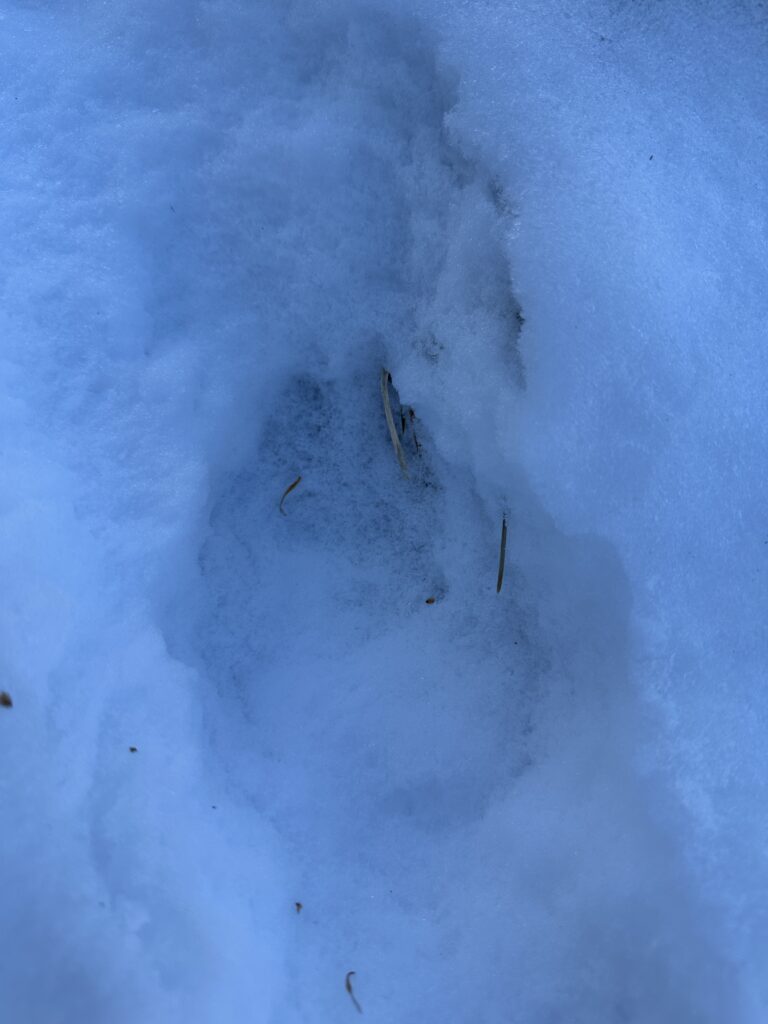
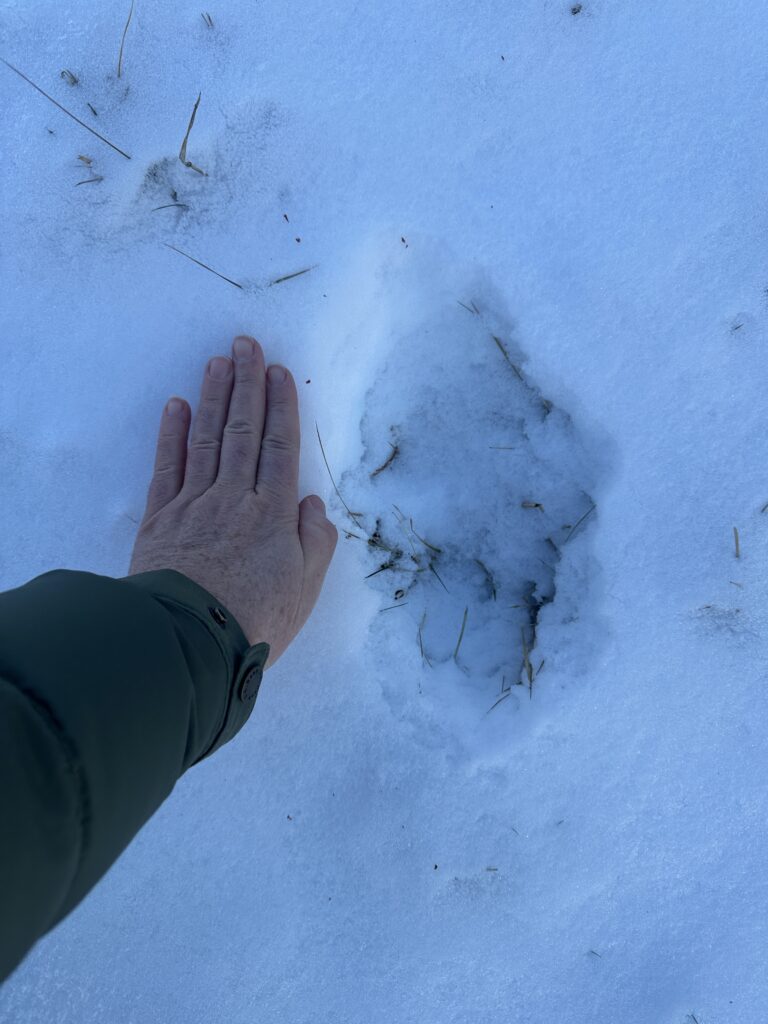
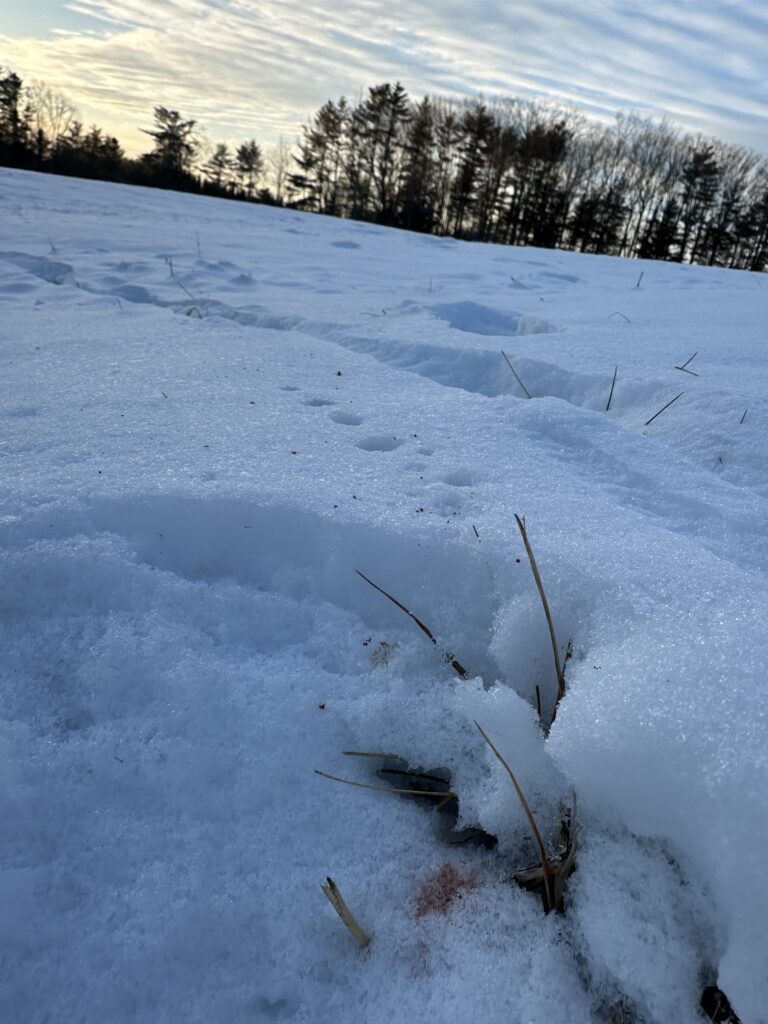
Nature Journaling Tracks
Feral Cat, Dark-eyed Junco, White-tailed Deer, Mystery Tracks
Part of the tracking homework was to also nature journal about it. I’ll continue this work through the winter months, as well. I’ve learned a lot about nature journaling through the Wild Wonder Foundation. If this is s topic that interests you, check them out!
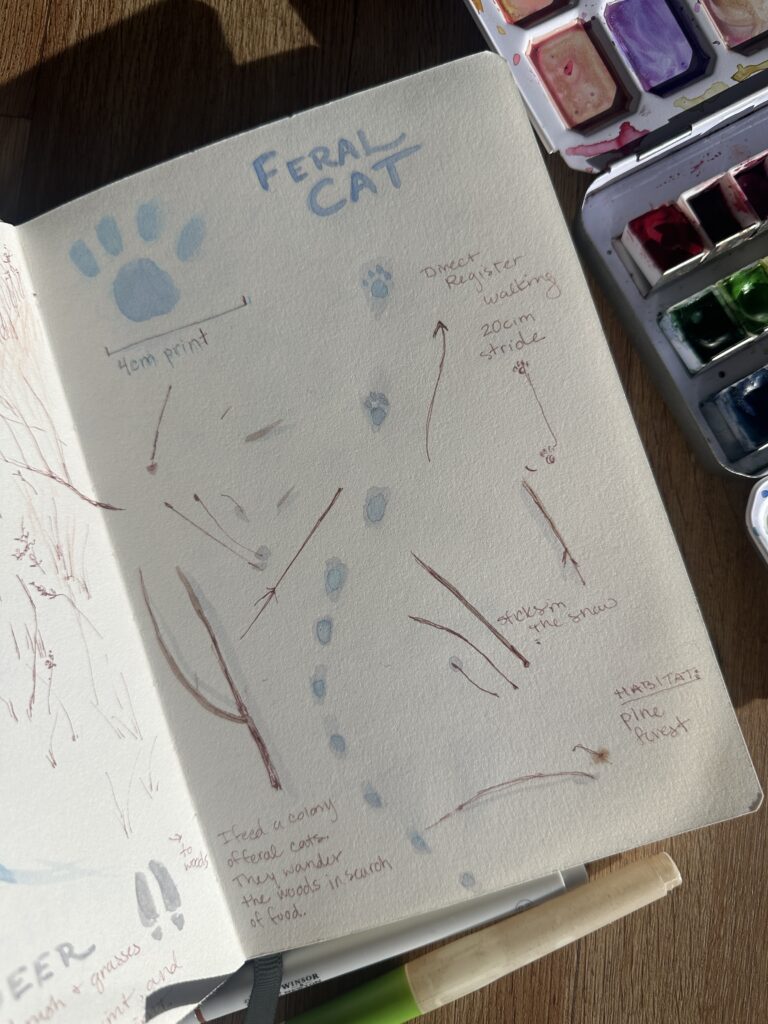
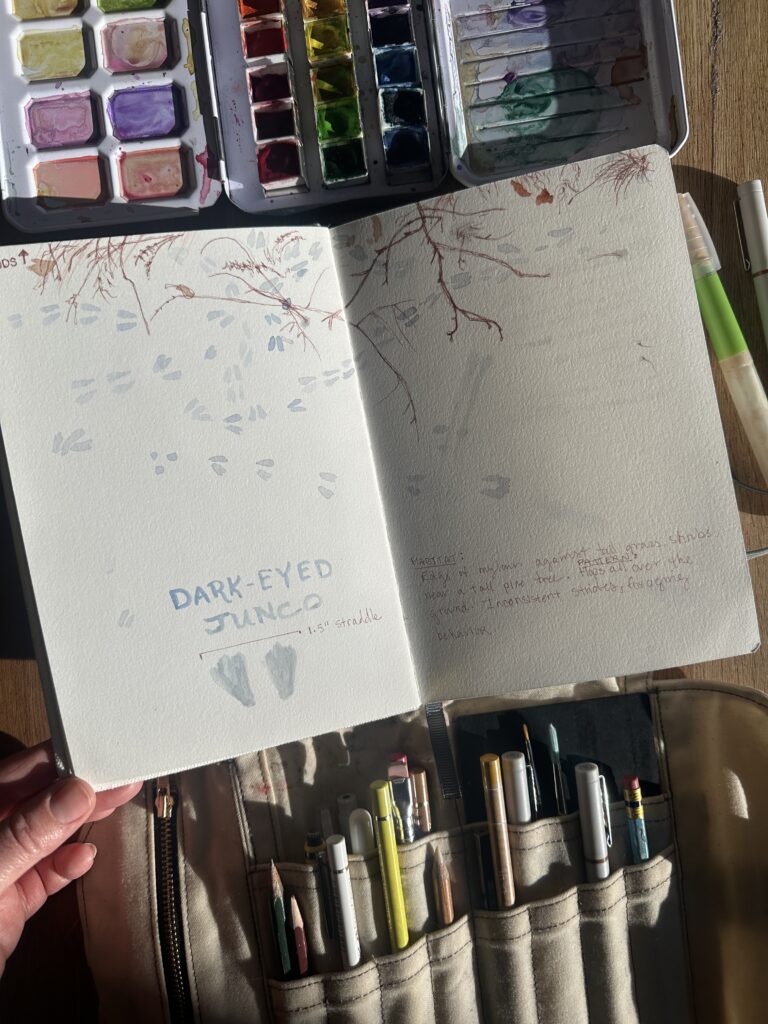
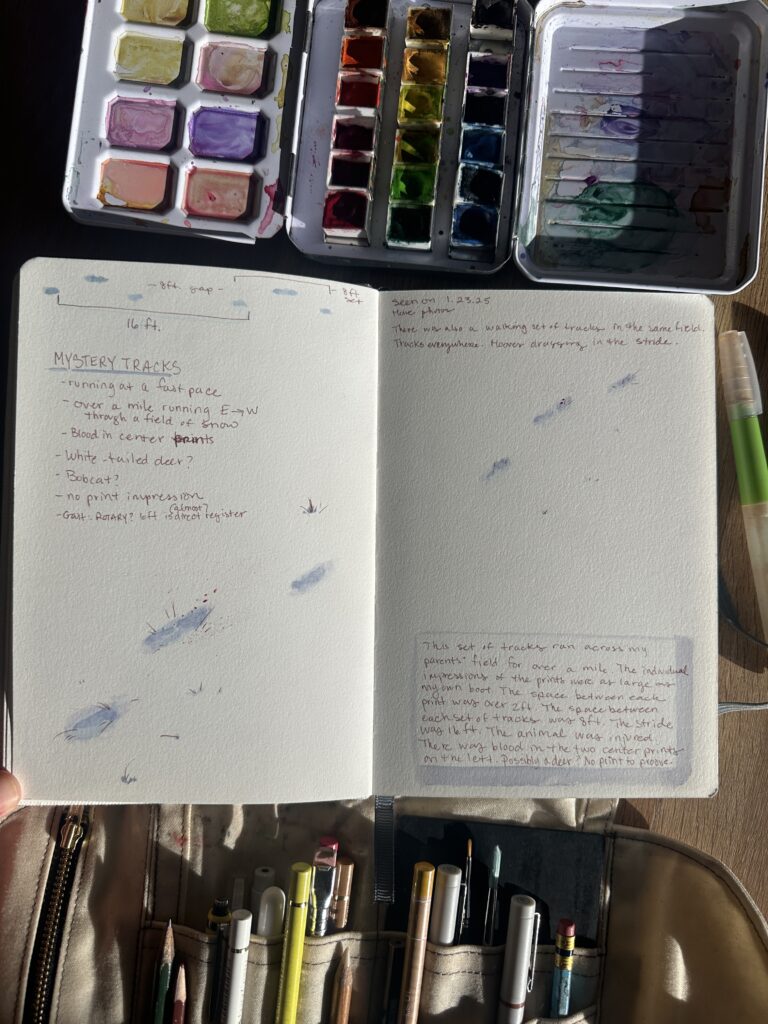

Discovery Box
Skulls & Sign ID
Another portion of the homework was called a Discovery Box. We had to go through the contents of the box and determine the Ids for the skulls, as well as sign, and make educated determinations on what critter chewed on sticks, etc. I was wrong on a few of my answers when I turned them in, but it helped me see what to look for next time. I wish I had taken more photos of the sticks and sign.
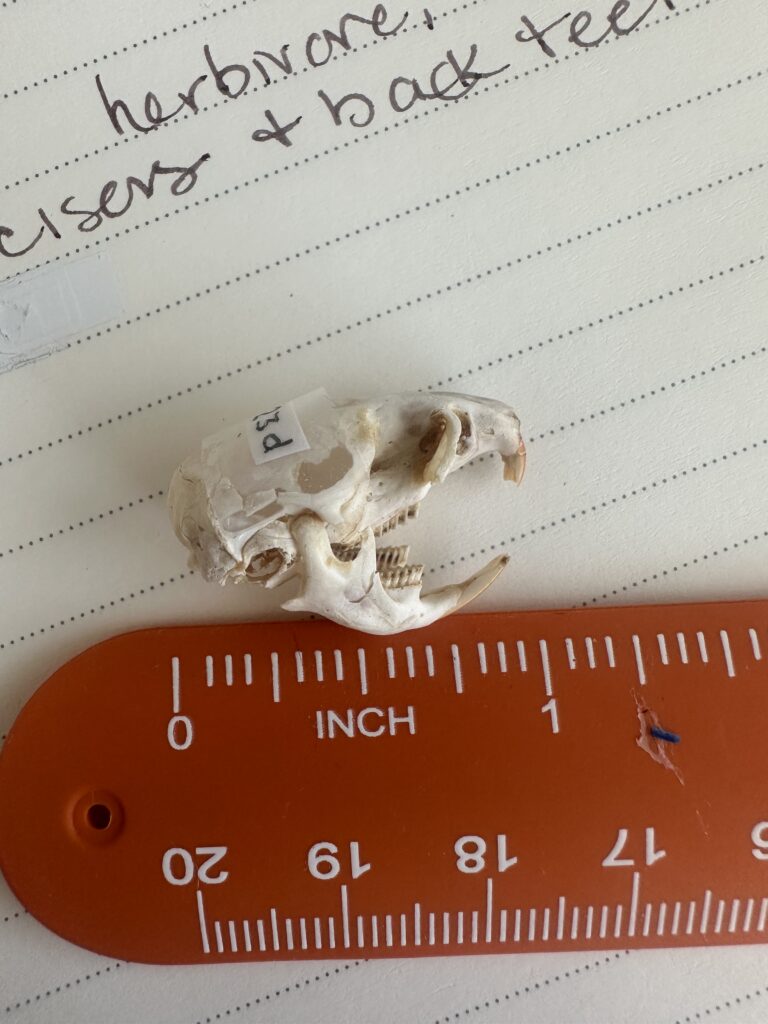
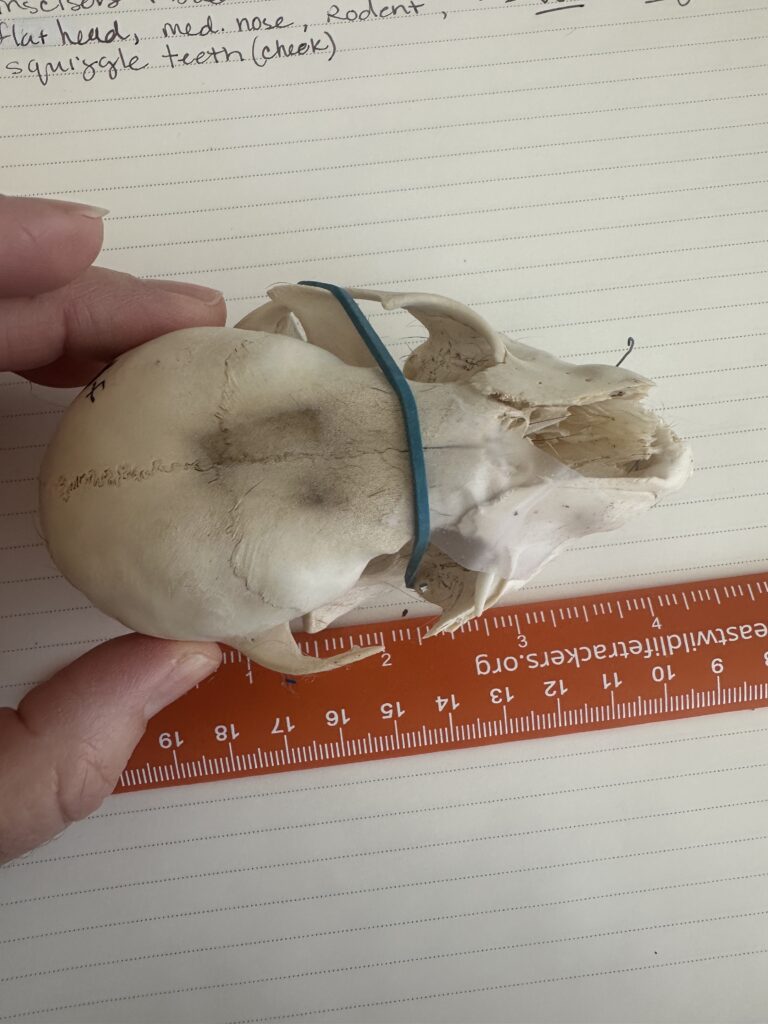
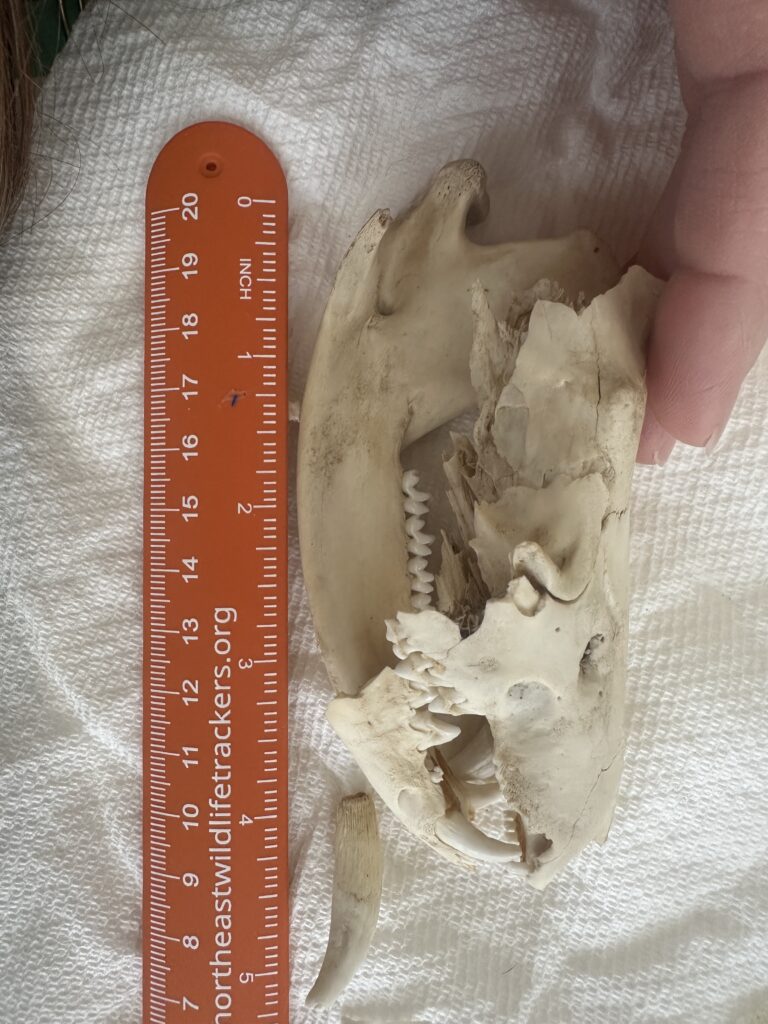
Delimited Site Visit
My Backyard
For my site visit, I paced out the borders and drew a map. Earlier in the month, before we had snow, I noticed to Eastern Bluebirds in the patch. I’ll record them, along with the other life I noticed such as packed down trails, dried up seeds, and tracks around the perimeter. This is what I have so far, but I want to add paint. I’ll spend more time at the site, and in the pages of my nature journal. I’ll post on instagram as well, so be sure to keep an eye out there. Until next time, stay wild.
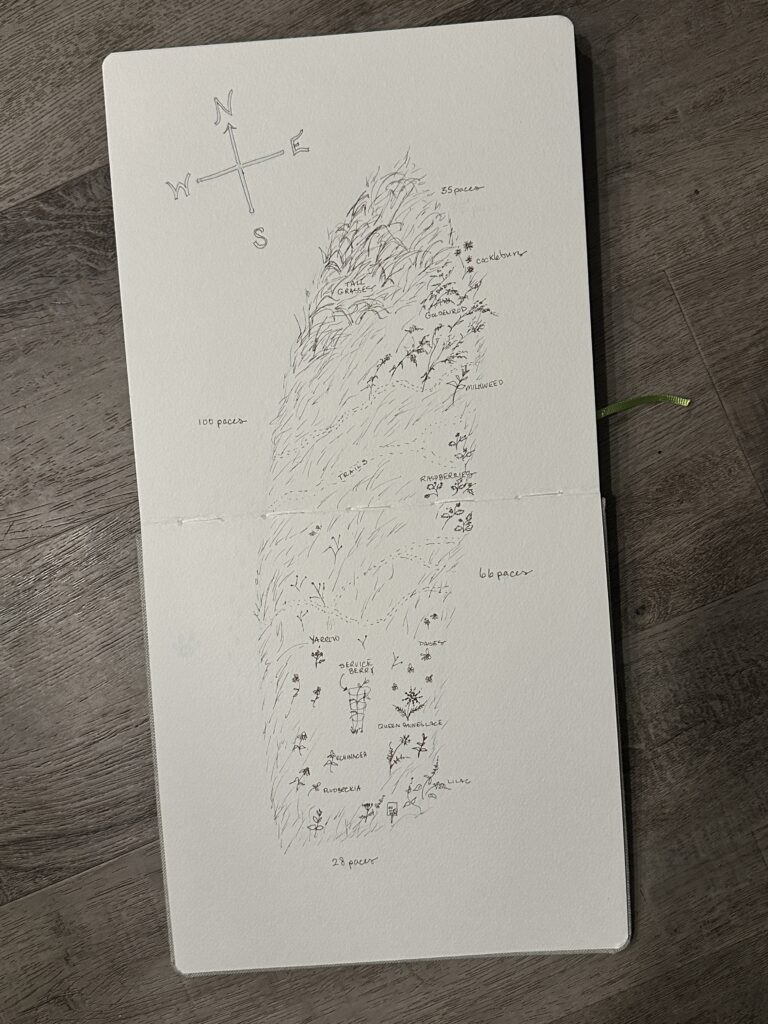

inspiration
Browse my favorite blog posts: inspiration, resources, and updates that I think you'll love.
